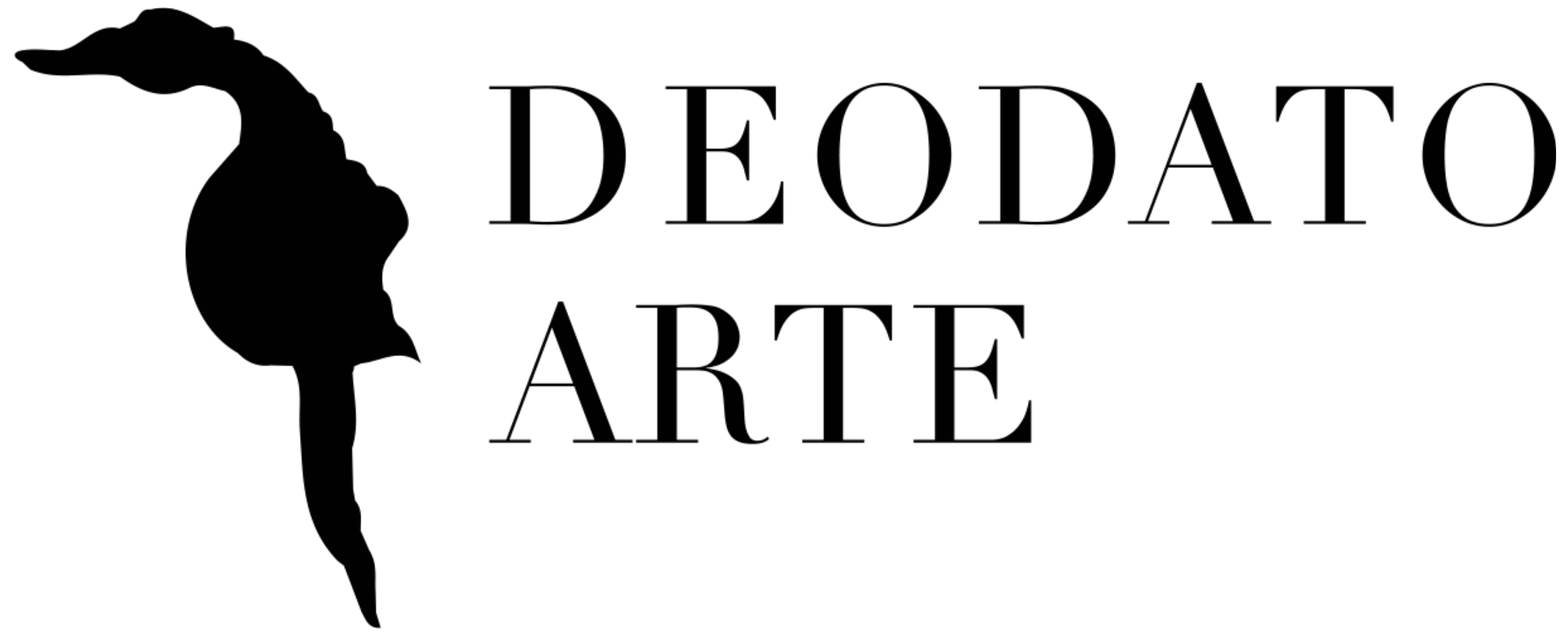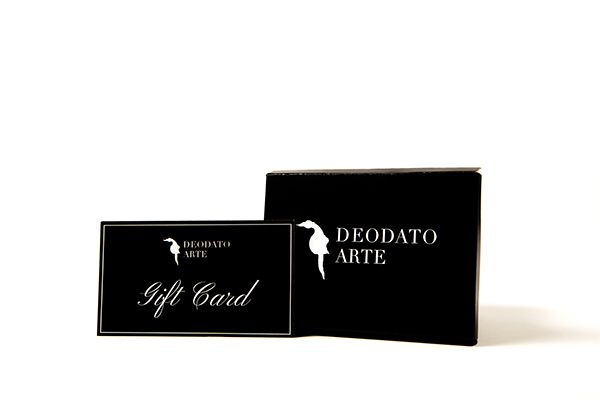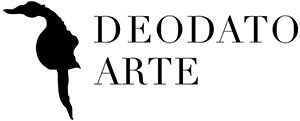
Over the past 40 years, renowned photographer and video artist David LaChapelle has made a significant impact in the world of photography and art. Known primarily for his hyperrealistic, highly saturated editorial portraits of celebrities, LaChapelle combines elements of Surrealism and Pop art in a humorous style. LaChapelle's work has been featured in institutions like the National Portrait Gallery in London, Monnaie de Paris, Victoria and Albert Museum, Musee D'Orsay, and the U.S. National Portrait Gallery, among others.
Described as the "Fellini of Photography" and the "Magritte of his genre”, LaChapelle's distinctive style is characterized by surreal shots with bright, fluorescent colors that create dreamlike compositions. His work is a blend of irony and a clear vision of contemporary society, often reflecting on themes like fame, celebrity, power, and gender. His photography has been influential in both the commercial and fine art realms, notable for its theatricality and boundary-breaking nature.
Early Life: 1963-1980
David LaChapelle was born in 1963 in Hartford, Connecticut. His early years were spent in Hartford, where he thrived in public school art programs but struggled with bullying. His family relocated to Raleigh, North Carolina when he was 9, where he was bullied further, primarily due to his sexuality. At 14, his family moved back to Fairfield, Connecticut. It was around this time, at the age of 15, that LaChapelle ran away from home to New York City, where he worked as a busboy at the renowned Studio 54.
LaChapelle’s initial stay in New York was short-lived, as he returned to live with his father for three years. During his teenage years, LaChapelle developed a passion for art. He credits his mother, a Lithuanian refugee who arrived at Ellis Island in the early 1960s, for influencing his artistic direction through her arrangement of scenes for family photos. His first photograph, coincidentally, was of his mother Helga during a family vacation in Puerto Rico.
Meeting Andy Warhol: 1980-1990
Before moving back to New York City, LaChapelle had enrolled in the North Carolina School of the Arts, initially as a painter. However, he soon began to explore photography, developing a unique technique where he hand-painted his own negatives, creating a sublime spectrum of color before processing his film. While in New York, his early works quickly caught the attention of the art community, leading to his first photography show at Gallery 303 in 1984. This exhibition was a turning point, as it led to his discovery by Andy Warhol, the king of Pop Art. Warhol, impressed by LaChapelle's talent, hired him as a photographer for Interview magazine, having reportedly said “Do whatever you want. Just make sure everybody looks good.”
The 1980s were not only a period of professional growth for LaChapelle but also a time of personal challenges and exploration. He lost his boyfriend to AIDS in the mid-1980s, a loss that deeply affected him. Seeking new inspiration, LaChapelle relocated to London, where he was struck by the city’s counterculture and its emphasis on originality. This experience was pivotal in shaping his aesthetic, as he found London’s creativity and insanity to be on a whole other level compared to Los Angeles.
During his time in Manhattan, LaChapelle was part of the creative boom of the 1980s. He frequented openings and socialized with artists like Jean-Michel Basquiat and Keith Haring. His work soon expanded beyond the confines of Interview magazine, with commissions from prestigious fashion magazines such as British Vogue, Vanity Fair, Rolling Stone, and GQ. LaChapelle's images also appeared in Details, i-D, The New York Times Magazine, The Face, Vogue Italia, and Vogue Paris, showcasing his growing reputation as one of the world's most important and influential contemporary photographers.
LaChapelle’s first studio was situated at 80 St. Marks Place, above the historic Theatre 80, from the mid-1980s until the mid-1990s. It was during this time that he honed his skills, known for his mastery of color, unique composition, and imaginative narratives. His work, including staged tableaus, portraits, and still lifes, began to challenge traditional photography norms, gaining international interest. LaChapelle began collaborating with high-profile magazines such as Vogue, The Face, DETAILS, Vanity Fair, and New York Times Magazine.
The Rise of LaChapelle in Contemporary Photography: 1990-2000
In 1991, The New York Times noted that LaChapelle would "surely influence the work of a generation," comparing his potential impact to that of the renowned Richard Avedon. This prophecy began to manifest quickly; by 1995, he was named "Best New Photographer of the Year" by both French Photo and American Photo magazines. That same year, he created the iconic 'kissing sailors' advertisement for Diesel, notable for being one of the first public displays of a gay or lesbian couple kissing in an advertisement. The ad, set against the backdrop of the World War II peace celebration, gained attention for its timing amidst the 'don't ask, don't tell' debates in the United States.
LaChapelle's accolades continued to accumulate. In 1996, he received the “Photographer of the Year Award” at the VH-1 Fashion Awards and the “Applied Photography of the Year Award” from The International Center of Photography. The following year, in 1997, he won the Art Directors Award for the first collection of his photographs, noted for best book and best graphic design. Additionally, in 1998, he received awards for “Cutting Edge Essay” and “Style Photography” at Life magazine’s Alfred Eisenstadt Awards for Magazine Photography. By 1999, he was honored in the “Cover of the Year” category.
Some of LaChapelle’s earliest celebrity portraits came in the mid-90s, collaborating with popular figures like Cameron Diaz, Drew Barrymore, Eminem, Britney Spears, Naomi Campbell, and David Bowie. A famous example of this is “Leonardo DiCaprio: Unspoiled”, a portrait of the young actor holding three bananas against a vibrant blue backdrop while surrounded by other fruits. This very portrait was released by the artist as a print limited to only five copies.
LaChapelle's photographic collections have also been highly regarded. His 1996 book, "LaChapelle Land," was selected as one of the 101 "Seminal Photographic Books of the Twentieth Century" and became a sought-after item by collectors. His second book, "Hotel LaChapelle" (1999), was praised as a "garish, sexy, enchanting trip." In 2000, LaChapelle's talents extended into music videos, as he won "Best Video" for Moby's "Natural Blues" at the MTV Europe Music Awards. His influence and reputation had firmly established him as a leading figure in contemporary photography by the end of the 20th century.
The New Creative Era of David LaChapelle: 2000-2010
In 2003, David LaChapelle moved his studio to Los Angeles, California. This 12,000 square foot facility became the hub for many of his productions, equipped with three separate shooting stages, a large prop warehouse, woodshop, multiple dressing rooms, makeup and hair suites, editing suites, administrative and production offices, a kitchen, equipment warehouse, theater, parking, and a fireproof and armed working archive. This move marked the beginning of a period during which the majority of LaChapelle's productions were based in LA.
Throughout the decades, LaChapelle established himself as one of the most published photographers worldwide. His anthology of books grew to include titles such as "LaChapelle Land" (1996), "Hotel LaChapelle" (1999), "Heaven to Hell" (2006), "Lost & Found", and "Good News" (2017). His work expanded beyond photography into music videos, films, and stage projects. In 2005, his feature film "Rize" was released theatrically in 17 countries. Over the years, LaChapelle's photographs evolved into a seamless blend of photography and art, characterized by their originality and artistic quality.
LaChapelle's early works are known for their satirical, outrageous, and bizarre nature. His "Jesus is my Homeboy" (2003) series, for instance, placed well-known characters in unexpected settings. A significant turning point in LaChapelle's style occurred in 2006 following his visit to the Sistine Chapel. Profoundly influenced by Michelangelo's masterpiece, he decided to leave the world of advertising to devote himself entirely to art. His work often critiques the American Dream and hyper-consumerism, exemplified in shots like "Death by Hamburger," where a girl is overwhelmed by a giant inflatable hamburger. This image was put out by the artist in a run of four standard prints and 4 artist’s proof prints. His vivid, sometimes grotesque images, combined with high-end production, became his trademark, influenced by both Pop Art and Surrealism.
In the same year as his visit to the Sistine Chapel, after a personal struggle with bipolar disorder and a mistaken belief that he had AIDS, LaChapelle left his homes in New York and Los Angeles. He moved to a remote part of Hawaii, embracing a sustainable lifestyle, growing his own food, and using solar power. This change marked a significant shift in his focus towards spiritualism and the power of nature, as seen in his series "Paradise" (2009—2015), which combined controversy with religious symbolism.
While working in Hawaii, LaChapelle was invited to shoot for a gallery, an opportunity he hadn't had since his early days in New York. This invitation marked a rebirth for him, bringing his career full circle back to where it began in the galleries.
Spirituality and Social Criticism in the Art of David LaChapelle: 2010-present
Over the years, LaChapelle has shifted his artistic focus significantly. LaChapelle's career has spanned various mediums, including fashion photography, film, theater, and music video production. He has collaborated with major international brands like Tommy Hilfiger, Schweppes, Nokia, and Burger King. In addition to his commercial work, he has maintained a fine-art photography practice exploring themes of mortality, transcendence, and religious iconography. His photographs have also reinterpreted biblical scenes and Christian myths in a modern context, as seen in works like "The Holy Family with St. Francis”, part of his “A New Heaven, A New Earth” series and available on our website. This exploration of religious symbolism aligns with his Catholic faith and often critiques modern society's consumerism. Today, he is particularly known for emphasizing environmental issues in his work, creating a series of photos that highlight the disruptive relationship between man-made constructions and nature.
"I love to create through the use of imagination, turning my dreams into images," says LaChapelle, reflecting on his approach to art. Although he initially made a significant impact in fine-art photography with his vibrant mix of color and conceptual imagery, he is perhaps best known today for his iconic celebrity photoshoots and directing music videos for pop stars.
While he no longer maintains the grueling 14-hour workdays of his earlier career, LaChapelle still photographs celebrities whom he finds intriguing. This was exemplified in his 2020 cover shoot with Lizzo for Rolling Stone. Another example would be his recent work “Travis Scott: Partly Cloudy with a Chance of Sprinkles”, which depicts the popular hip-hop artist in a suit seemingly made of clouds in front of a donut shop. This work would be released in a limited edition of seven with three artist’s proofs and is available on our website. His photos continue to be provocative, spiritual, and sexual, featuring figures like Kanye West as Christ, Michael Jackson as an angel, and Kim Kardashian as Mary Magdalene. His 2017 book "Good News" features a Christ-like figure on its cover, symbolizing a journey beyond the material world in search of a lost paradise.
Exhibitions
In the gallery world, LaChapelle began showing with Reflex Amsterdam in 2009 and Galerie Templon in 2013, both of which continue to represent him. By 2011, his work had been exhibited at the Lever House in New York and had retrospectives at the Museo Arte Contemporáneo de Puerto Rico, the Hanagaram Design Museum in Seoul, and the Galerie Rudolfinum in Prague. Subsequent years saw his works displayed at the Los Angeles County Museum of Art in LA (2012), the Musée d'Orsay in Paris (2013), Fotografiska Museet in Sweden (2013), and the National Portrait Gallery in Washington D.C. (2014).
In 2014, LaChapelle exhibited his series 'Land Scape' in New York, Vienna, London, and Paris. His works were also shown at OstLicht Galerie fur Fotografie in Vienna, MAC Lima in Peru, Palazzo delle Esposizioni in Rome, and the Museo de Arte Contemporáneo in Chile. In 2016, his works were featured at The Victoria and Albert Museum in London, DSC Gallery in the Czech Republic, various venues in Montevideo, Uruguay, and the Edward Hopper House in New York. In 2018, LaChapelle's exhibition "Good News For Modern Man" showcased ten of his series at the Groninger Museum in The Netherlands.
In 2023, LaChapelle had an exclusive public exhibition at Deodato Arte Gallery in Rome, where he showcased his latest series “Stations of the Cross”. In this series, LaChapelle shows the fifteen stations, using Italian artist and actor Tedua as Christ. LaChapelle also exhibited his 2008-2011 series “Earth Laughs in Flowers”, reimagining traditional Dutch vanitases in his own style.
David LaChapelle’s Ongoing Influence and Available Works
In the span of four decades, David LaChapelle has transformed the landscape of photography and video art, leaving an indelible mark in both the art world and popular culture. His journey from a bullied youth in Connecticut to a celebrated artist in the global scene is as colorful and surreal as his works.
LaChapelle's impact is evident in his wide range of exhibitions in prestigious galleries and museums worldwide, showcasing his versatility and influence across different mediums - from fashion photography to music videos, films, and theater. His unique approach to celebrity portraiture and fine art photography blurs the boundaries between commercial appeal and artistic integrity.
Today, LaChapelle continues to innovate and inspire, creating art that not only captures the zeitgeist of our times but also challenges and redefines it. His legacy is one of boldness, transformation, and relentless creativity - a testament to his enduring influence in the world of contemporary art and beyond.
For those interested in David LaChapelle prints and works for sale Deodato Arte offers a selection of the artist's works for sale online at deodato.art. If interested in finding out about David LaChapelle, prices, value or which works will be on display at Deodato Arte Contemporary Art Gallery, please do not hesitate to contact us by sending an e-mail to [email protected].











 Register
Register Wishlist
Wishlist Contact Us
Contact Us











